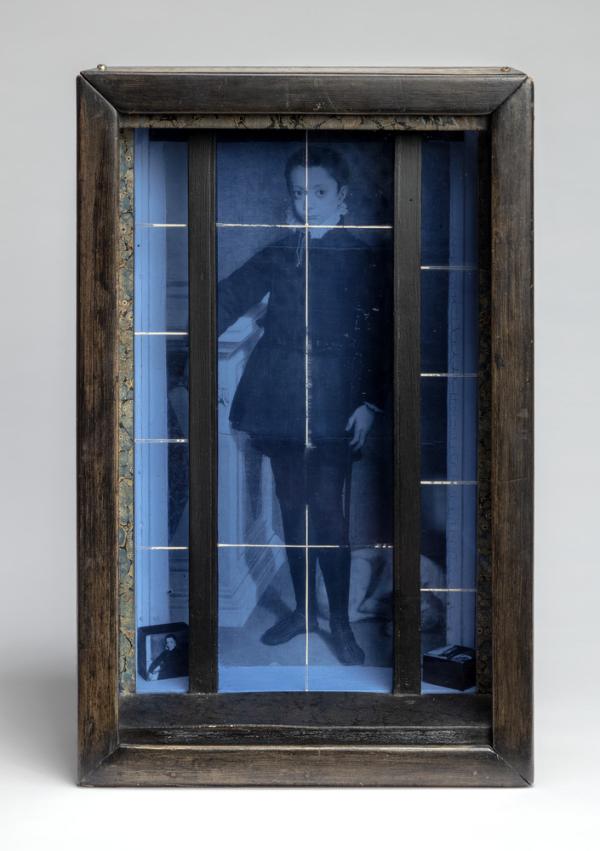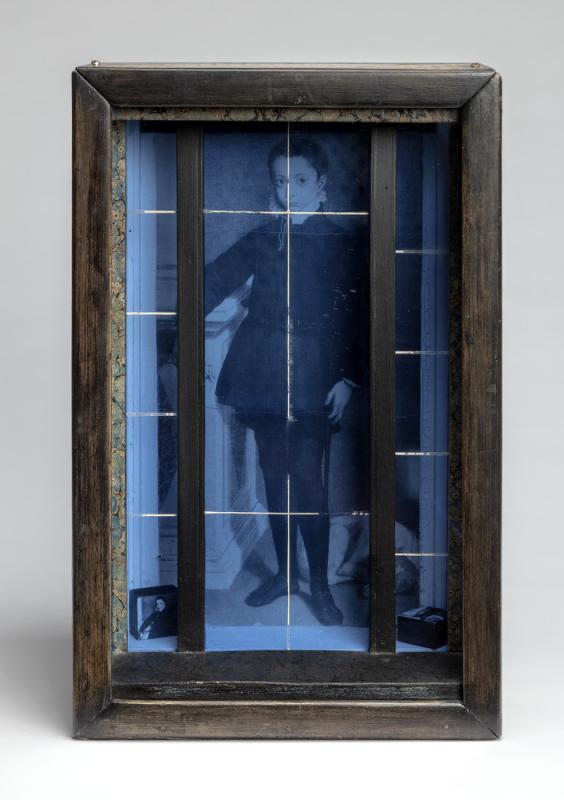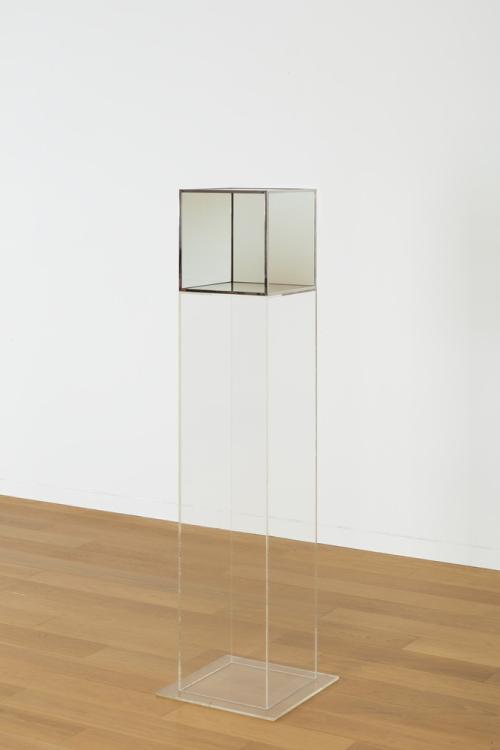Skip to main content
Untitled (Medici Boy)
Artist
Joseph Cornell
(American, 1903-1972)
Date1953
MediumWood, glass, oil, and paper
DimensionsOverall: 18 1/4 x 11 3/8 x 5 1/2 in. (46.36 x 28.89 x 13.97 cm)
Credit LineCollection of the Modern Art Museum of Fort Worth, Museum purchase, The Benjamin J. Tillar Memorial Trust
Object number1968.16
Status
Not on viewSignedverso u.l.
Copyright© 2020 The Joseph and Robert Cornell Memorial Foundation / Artists Rights Society (ARS), New York
Label TextJoseph Cornell’s constructed boxes take us on imaginative journeys through the history of culture, although the artist himself never traveled farther than the outskirts of New York. In Untitled (Medici Boy), 1953, a black-and-white photographic reproduction of a Renaissance portrait of a young nobleman—an image Cornell used multiple times throughout the 1950s—is inset beneath a panel of blue-tinted glass in a shadow box lined with gold marbled paper. At the time of the work’s creation, the boy in the portrait was believed to be a member of the powerful Medici family of Renaissance Florence. In fact, the subject of the portrait (by the female painter Sofonisba Anguissola [1532–1625], and currently in the collection of the Walters Art Museum in Baltimore) is the nine-year-old Marchese Massimiliano Stampa, depicted at the age of his ascent into nobility. At the bottom of the box, two small wooden cubes resembling toy blocks, covered with pasted-on details of the same portrait, gesture to the youthful age of the boy.
Untitled (Medici Boy) demonstrates Cornell’s love of art history. As an object, Untitled (Medici Boy) is reminiscent of a medieval reliquary, inviting the viewer to peer through the glass to discover its mysterious contents. Although Cornell worked outside of any defined modern movement or style, he eagerly absorbed the art of his time. His boxes especially reflect the legacy of Surrealism, with their poetic juxtapositions of seemingly incongruous subjects and effects, and demonstrate the enduring influence of Marcel Duchamp’s readymades, with their emphasis on found objects.
Untitled (Medici Boy) demonstrates Cornell’s love of art history. As an object, Untitled (Medici Boy) is reminiscent of a medieval reliquary, inviting the viewer to peer through the glass to discover its mysterious contents. Although Cornell worked outside of any defined modern movement or style, he eagerly absorbed the art of his time. His boxes especially reflect the legacy of Surrealism, with their poetic juxtapositions of seemingly incongruous subjects and effects, and demonstrate the enduring influence of Marcel Duchamp’s readymades, with their emphasis on found objects.




